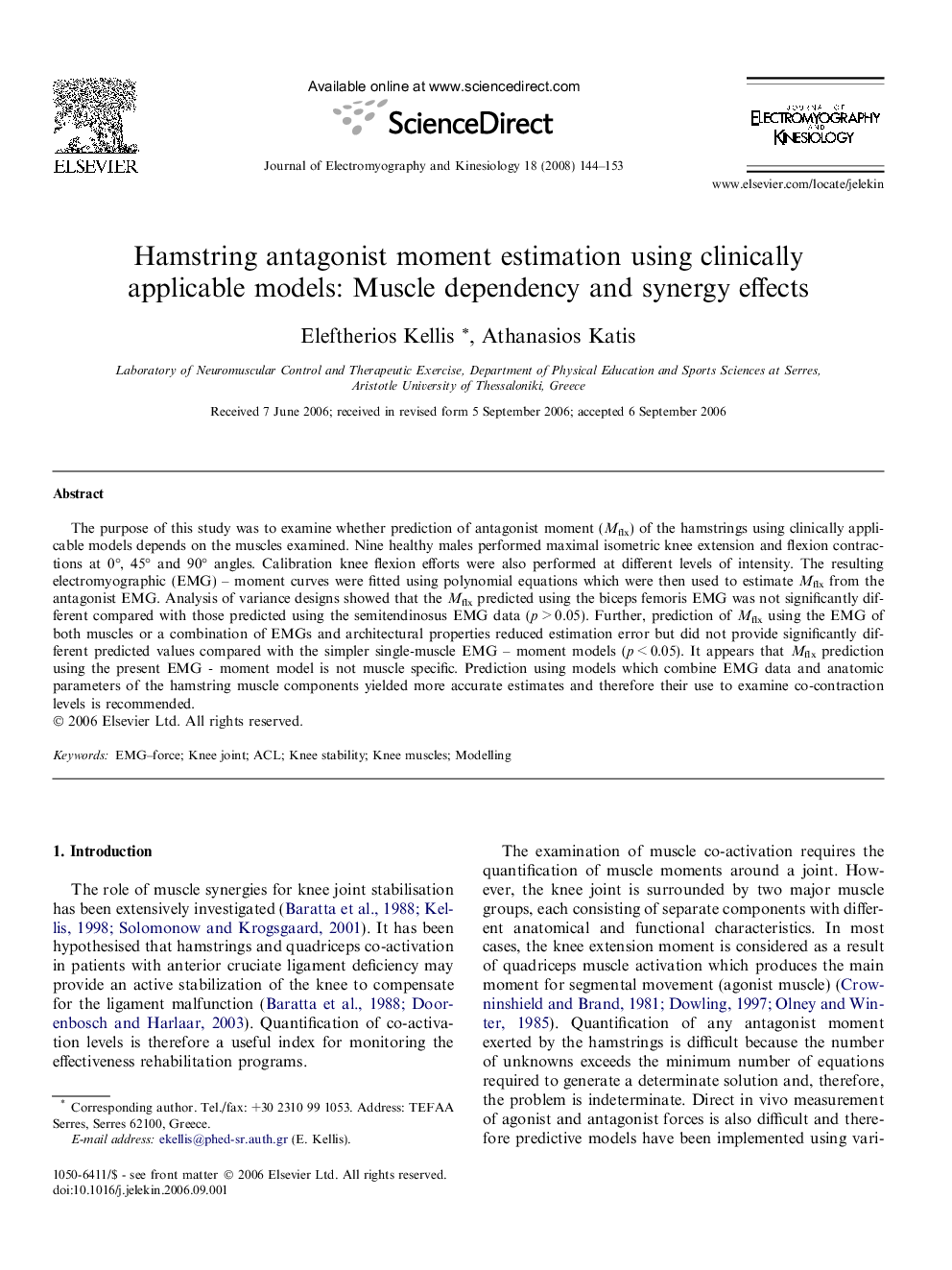| Article ID | Journal | Published Year | Pages | File Type |
|---|---|---|---|---|
| 4065379 | Journal of Electromyography and Kinesiology | 2008 | 10 Pages |
The purpose of this study was to examine whether prediction of antagonist moment (Mflx) of the hamstrings using clinically applicable models depends on the muscles examined. Nine healthy males performed maximal isometric knee extension and flexion contractions at 0°, 45° and 90° angles. Calibration knee flexion efforts were also performed at different levels of intensity. The resulting electromyographic (EMG) – moment curves were fitted using polynomial equations which were then used to estimate Mflx from the antagonist EMG. Analysis of variance designs showed that the Mflx predicted using the biceps femoris EMG was not significantly different compared with those predicted using the semitendinosus EMG data (p > 0.05). Further, prediction of Mflx using the EMG of both muscles or a combination of EMGs and architectural properties reduced estimation error but did not provide significantly different predicted values compared with the simpler single-muscle EMG – moment models (p < 0.05). It appears that Mflx prediction using the present EMG - moment model is not muscle specific. Prediction using models which combine EMG data and anatomic parameters of the hamstring muscle components yielded more accurate estimates and therefore their use to examine co-contraction levels is recommended.
